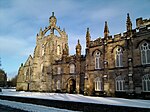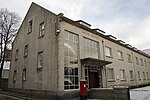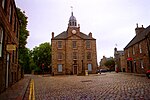Aberdeen Mosque and Islamic Centre

The Aberdeen Mosque and Islamic Centre (AMIC) is the largest main mosque and Islamic centre in North East of Scotland and Aberdeen, Scotland. AMIC is a charitable, non profitable, non political organisation. Its purpose is to hold congregational prayers and Islamic religious activities, with provision of free religious services to members of the Muslim community relating to Islamic marriage, birth, death and burial in accordance with Scottish law. AMIC also aims to promote unity and provide channels for better communication and understanding between the Muslims and non Muslims in the area. The mosque contributes to the local community by promoting and participating in projects related to areas of social concern. It operates from its new location at Frederick Street. Occasionally, AMIC, as well as other mosques in Aberdeen, host various types of open days to accommodate and provide some insight for the wider community.
Excerpt from the Wikipedia article Aberdeen Mosque and Islamic Centre (License: CC BY-SA 3.0, Authors, Images).Aberdeen Mosque and Islamic Centre
Spital, Aberdeen City Old Aberdeen
Geographical coordinates (GPS) Address Nearby Places Show on map
Geographical coordinates (GPS)
| Latitude | Longitude |
|---|---|
| N 57.160888888889 ° | E -2.1007222222222 ° |
Address
Spital 164
AB24 3JD Aberdeen City, Old Aberdeen
Scotland, United Kingdom
Open on Google Maps







